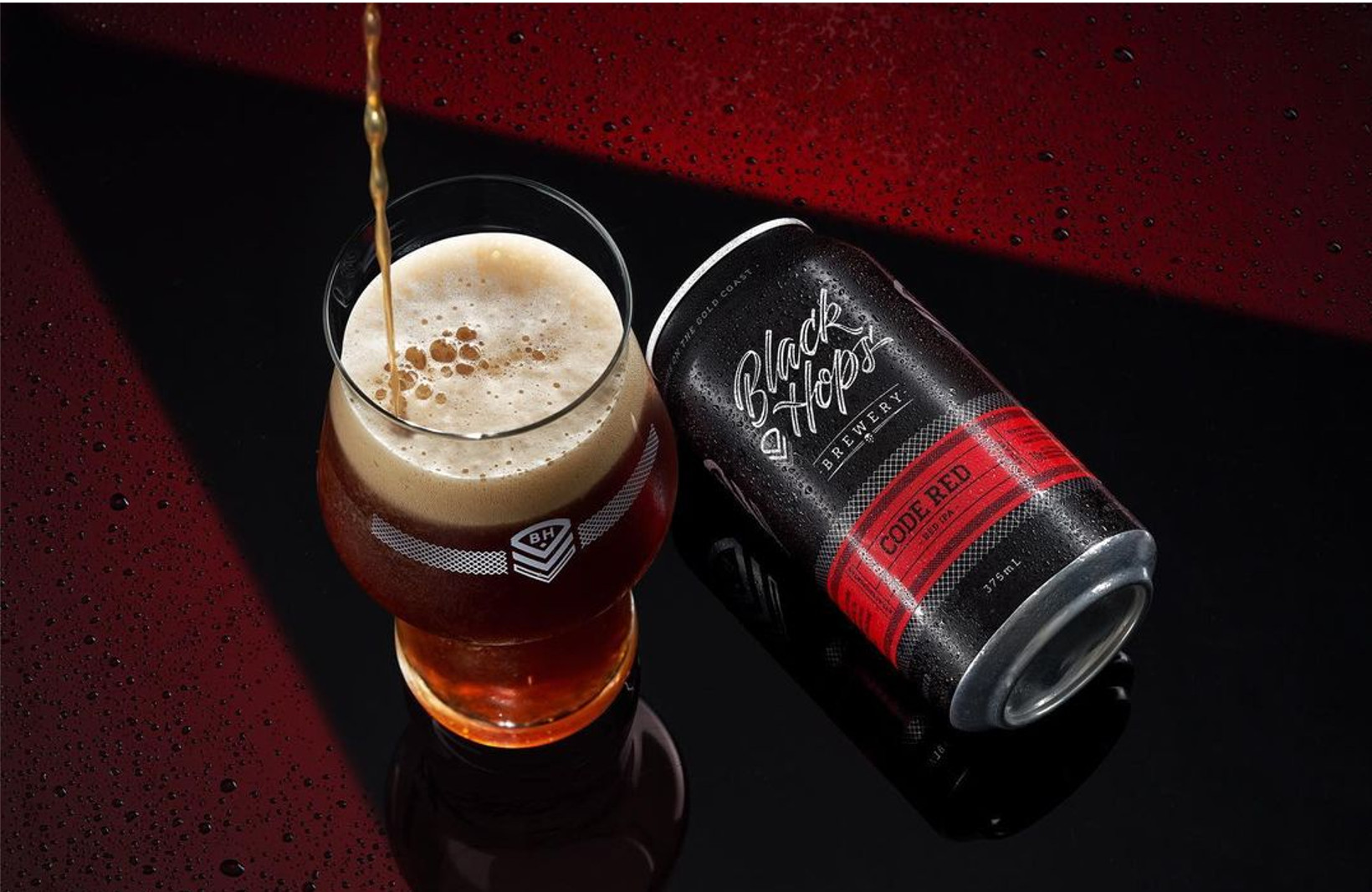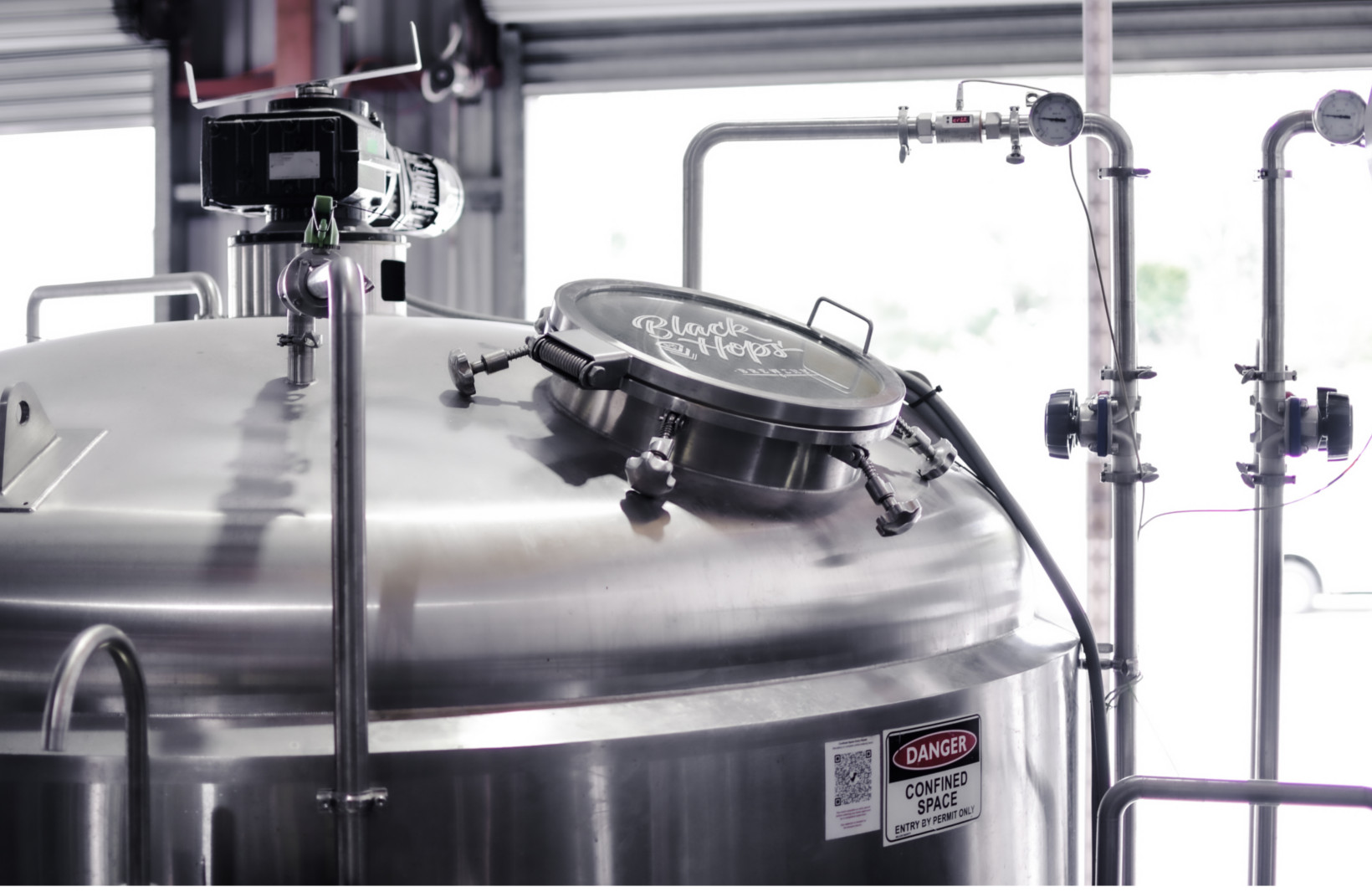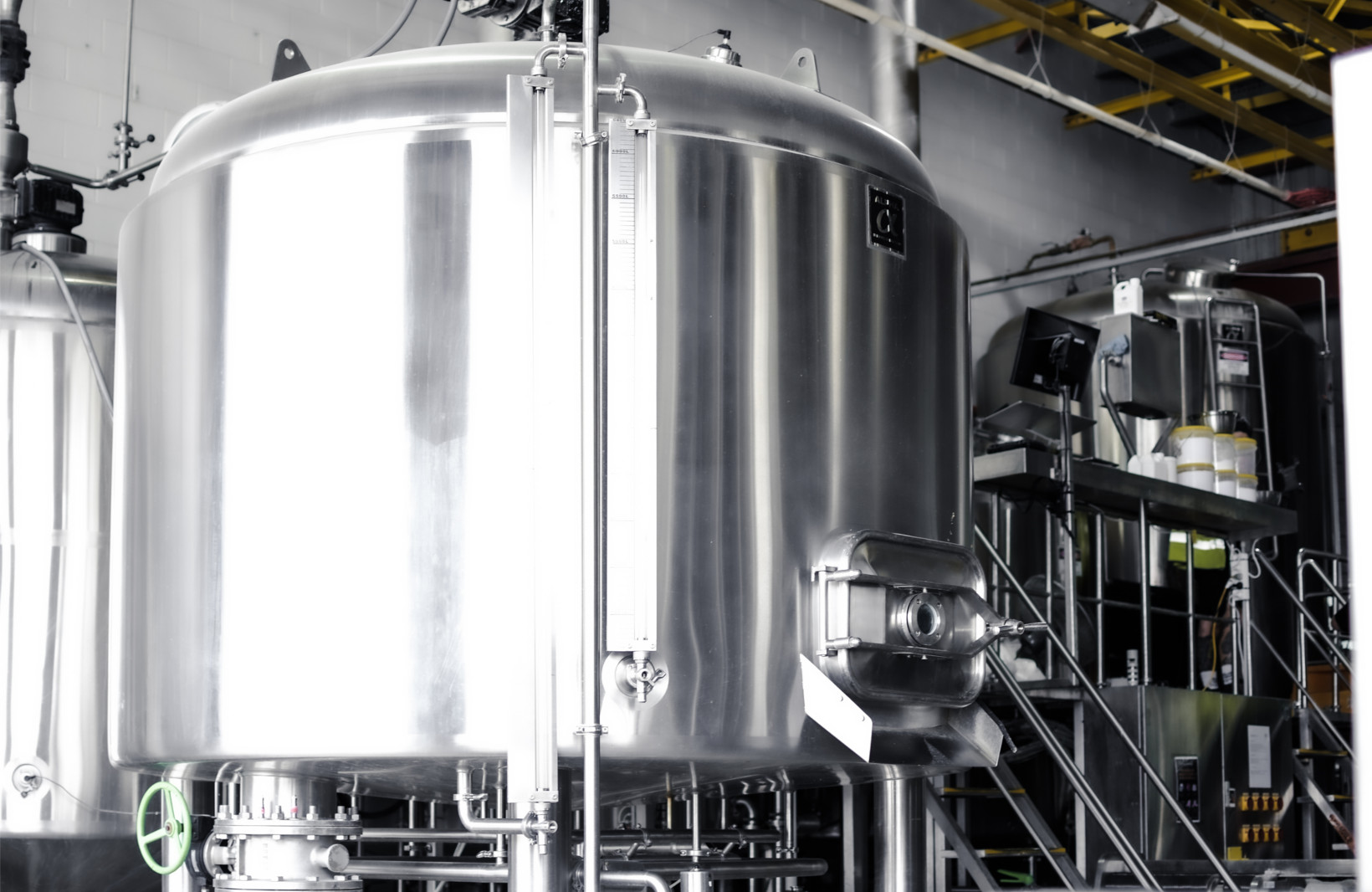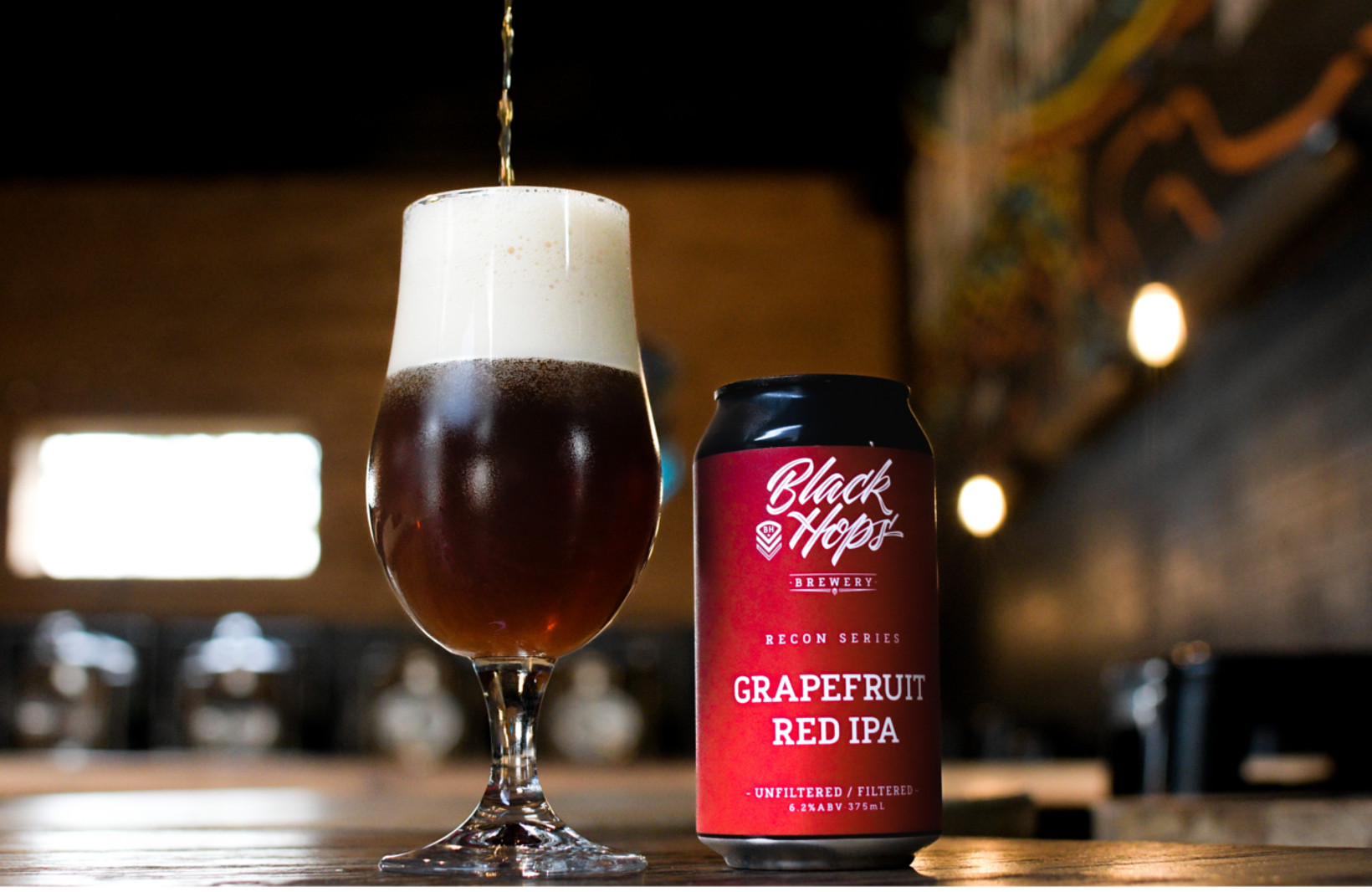Grapefruit Red IPA is a new Black Hops beer that, truth be known, was never actually meant to be a beer in the first place. Born from the misguided adventures of a Code Red situation, this beer started out life as a Black Hops cult favourite but morphed into something a bit different. Not every brew goes smoothly and sometimes it’s not obvious until the very end.
We drink with our eyes as much as our nose and mouth and while this didnʼt pass the eye test it definitely passed the nose and mouth sensory test.
So how did this fortuitous circumstance come about? Read on ..
A Code Red Situation Averted
Anyone who’s followed the Black Hops story for any length of time will know that the multiple AIBA Award winning Code Red is THE non core range beer with one of the biggest cult followings: A 6.2% classic American Red Ale, boasting a rich toffee malt body and a luscious ruby colour with minimal yeast character, providing a clean finish and allowing the Simcoe, Citra and Mosaic hops to shine through.
You can read about how Code Red first originated in part two of a series of posts about our early brewing days: The First Black Hops Beers We Ever Brewed: Beers 7 – 12
Recently we commenced brewing a new batch of Code Red. It was during this process that we encountered a genuine ‘code red’ situation. Rather than panic, our trusty Brew Crew got to work to salvage a potentially dire outcome, bringing to life a unique new beer in the process.
The Inside Story Of How Grapefruit Red IPA Came To Fruition
For the full technical rundown of how this happy brewing accident transpired, we got the inside story from Black Hops Production Manager Lara Maya .. (warning: brewing jargon incoming!)
The issue we encountered was that the Code Red that we initially brewed turned out being super hazy and brown, as opposed to its normal glowing red hue – which is definitely not what we were aiming for! So how did this come about?
Wort Clarity Issues
Haze is mainly protein, polyphenols, their bond and carbohydrates. Significant quantities of the protein will denature at boiling and be separated as trub. The carbohydrate fraction will continue forward and be present in the beer, causing beer filtration difficulties. So a clear wort is highly desirable.
Compromised wort clarity is generally associated with problematic wort separation, which for Black Hops takes place in a Lauter tun, which operates much like a giant sieve and is used for separating the wort from the solids in the mash.
Our Lauter tun is very manual, and the brew crew are largely responsible for maintaining the flow rate of the wort travelling from the Lauter to the kettle. The operator monitors factors such as sparging flow rate and temperature, transferring flow rate, pH and the gravity of the wort, as well as the differential pressure (DP) rate.
When this differential pressure increases to a non-acceptable level, the brewer will need to start the Lauter tun rakes, which will disrupt the grain bed, and extra solids will inevitably get through.
What we do know for certain is that the lauter tun rakes had to be turned on due to a high differential pressure (DP) level. We also know that some murky wort travelled into the kettle.
Impacts of changing the brew volume
This situation initially unfolded when we changed the brew volume, leading to some unexpected complications. We usually brew a minimum of 45hL (4,500L), but this planned batch of Code Red was only going to be a 25hL run.
The percentage ratio of a few of the special malts (in particular the Carafa Special T3, which is a key component in giving Code Red its vivid red colour), were accidentally not adjusted to take into account the smaller batch size, which also contributed to the beer turning out brown and rather hazy.
To accurately control the temperatures in the vessels as part of the brewing process, insulated jackets are commonly used. The jacket surrounds all or part of the vessel and water or other fluids are circulated through the jacket to transfer heat or cooling through the walls of the vessel to the liquid within the vessel.
But because the batch being brewed was smaller by 20hL, this resulted in the water and fluids only reaching the first of the insulated jackets.
One of our key learnings is that our kettle must have a minimum volume to achieve a thorough boil and create insoluble flocs (precipitated complexes of proteins and polyphenols), which are formed in the wort during wort boiling. These flocs are called ‘trub’ or ‘hot break’ and this process did not occur correctly during the brew.
In saying that, the other stages of the brewing process for the beer were a success, namely:
- Inactivation of malt enzymes
- Sterilisation of the wort
- Concentration of wort by evaporation
- Development of flavour and colour
- Extraction and isomerisation of hop compounds
- Removal of unwanted volatile flavour compounds
- Acidification of the wort
Changing the Flavour & Aroma to Match The Appearance
As a result of the aforementioned factors we’d inadvertently created a brown, hazy beer that, while still smelling and tasting like Code Red, certainly didn’t look like it, despite having been filtered.
So to overcome this and avoid any confusion we dosed it with a HPA BarthHaas Grapefruit Hop Extract. This big pithy grapefruit citrus hit worked wonders with the already juicy hop combo and roasted malts to give the beer an entirely new twist, morphing the ‘black duck’ Code Red into a beautiful Code Red derivative that we’ve christened Grapefruit Red IPA.
Grapefruit Red IPA is available for a limited time at all Black Hops Taprooms, as well as across a range of retail stores around the country.
And for those wondering when we’ll be delivering our next batch of real-deal Code Red, well keep your eyes peeled to our Socials and we’ll keep you in the loop.





